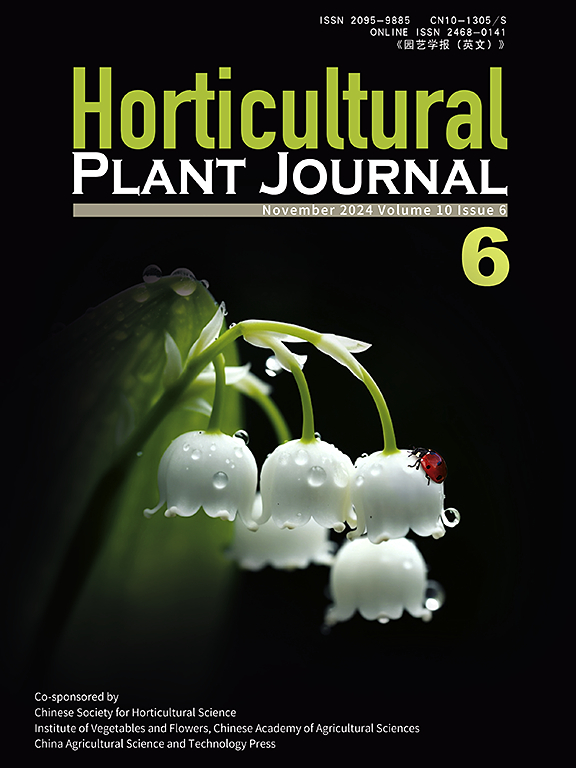晚伸长下胚轴是菊花远红光诱导开花的核心成分
IF 5.7
1区 农林科学
Q1 HORTICULTURE
引用次数: 0
摘要
开花是反映植物繁殖能力的重要生物学性状之一。菊花是经济上有价值的园艺作物,大多数是短日照品种,在秋天开花,尽管长日照品种也在进化。远红光(FR)光已被证明能促进菊花开花,但其潜在的分子机制仍知之甚少。在这里,我们发现CmLHY是生物钟振荡器的核心组成部分,是响应FR光信号诱导菊花在LD条件下开花的关键调节器。CmLHY- rnai转录组测序和WT植株转录组测序结果表明,CmLHY下游靶基因为CmLHY。酵母单杂交、电泳迁移率转移实验和双荧光素酶报告基因实验表明,CmLHY直接结合CmLATE启动子激活其表达,从而上调下游开花整合子CmFTL3调控菊花开花。综上所述,我们的研究结果揭示了生物钟中CmLHY-CmLATE模块响应FR光,调控LD条件下菊花开花的分子机制。该研究为植物整合外部光信号调控开花的分子网络提供了新的见解。本文章由计算机程序翻译,如有差异,请以英文原文为准。
LATE ELONGATED HYPOCOTYL is a core component of far-red light-induced flowering in chrysanthemum
Flowering is one of the critical biological traits that reflects the reproductive capacity of plants. Chrysanthemums are economically valuable horticultural crops, with the majority being short-day varieties that bloom in autumn, although long-day (LD) varieties have also evolved. Far-red (FR) light has been shown to promote flowering in chrysanthemums, yet the underlying molecular mechanisms remain poorly understood. Here, we identify CmLHY , a core component of the circadian clock oscillator, as a key regulator that responds to FR light signals to induce flowering under LD conditions in chrysanthemum. Transcriptome sequencing of CmLHY -RNAi and WT plants identified CmLATE as a downstream target gene of CmLHY. Yeast one-hybrid, electrophoretic mobility shift assay and dual-luciferase reporter assays demonstrated that CmLHY directly binds to the promoter of CmLATE and activates its expression, thereby upregulating the downstream flowering integrator CmFTL3 to regulate chrysanthemum flowering.In summary, our findings reveal the molecular mechanism by which the CmLHY-CmLATE module in circadian clock responds to FR light, regulating flowering under LD conditions in chrysanthemums. This study provides new insights into the molecular network of plants integrating external light signals to regulate flowering.
求助全文
通过发布文献求助,成功后即可免费获取论文全文。
去求助
来源期刊

Horticultural Plant Journal
Environmental Science-Ecology
CiteScore
9.60
自引率
14.00%
发文量
293
审稿时长
33 weeks
期刊介绍:
Horticultural Plant Journal (HPJ) is an OPEN ACCESS international journal. HPJ publishes research related to all horticultural plants, including fruits, vegetables, ornamental plants, tea plants, and medicinal plants, etc. The journal covers all aspects of horticultural crop sciences, including germplasm resources, genetics and breeding, tillage and cultivation, physiology and biochemistry, ecology, genomics, biotechnology, plant protection, postharvest processing, etc. Article types include Original research papers, Reviews, and Short communications.
 求助内容:
求助内容: 应助结果提醒方式:
应助结果提醒方式:


